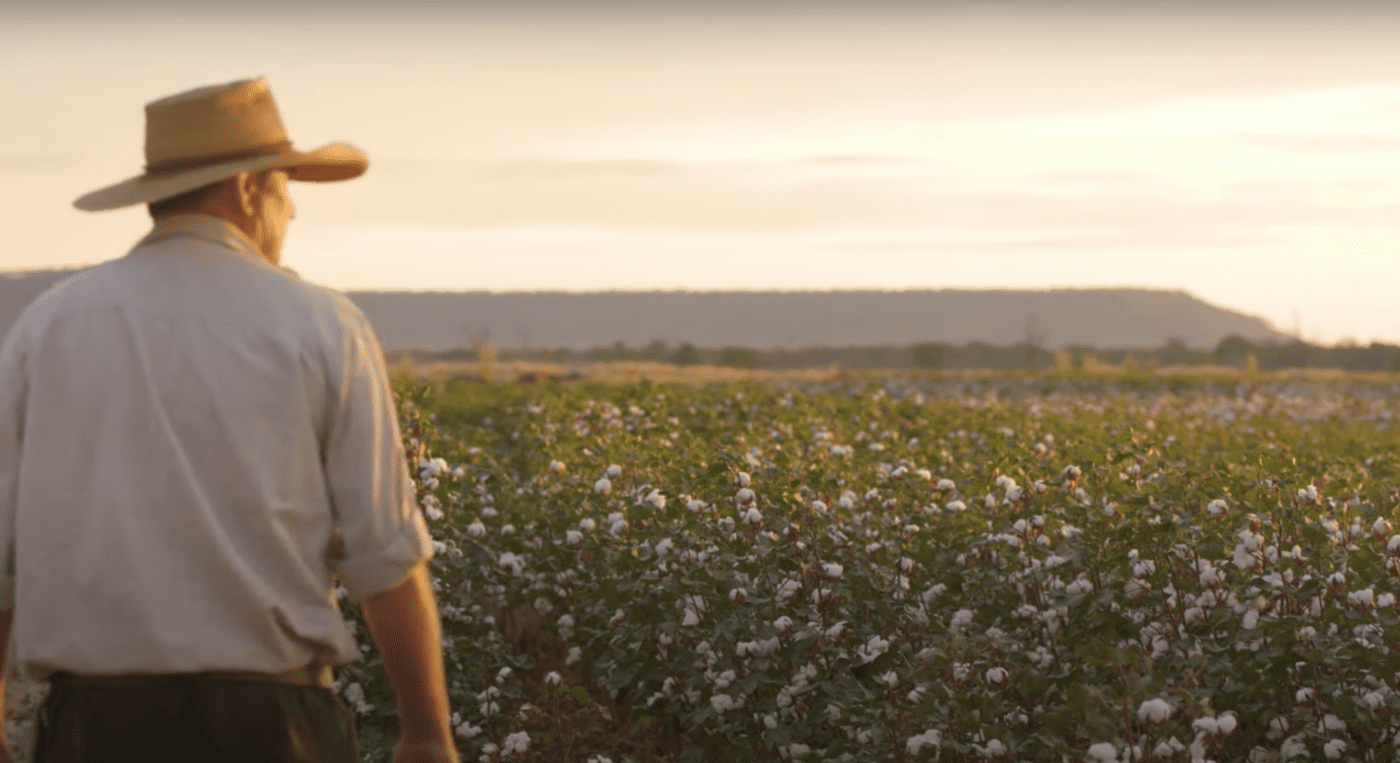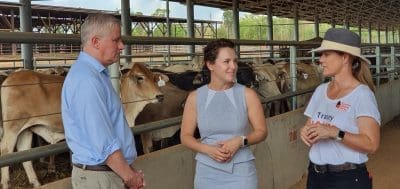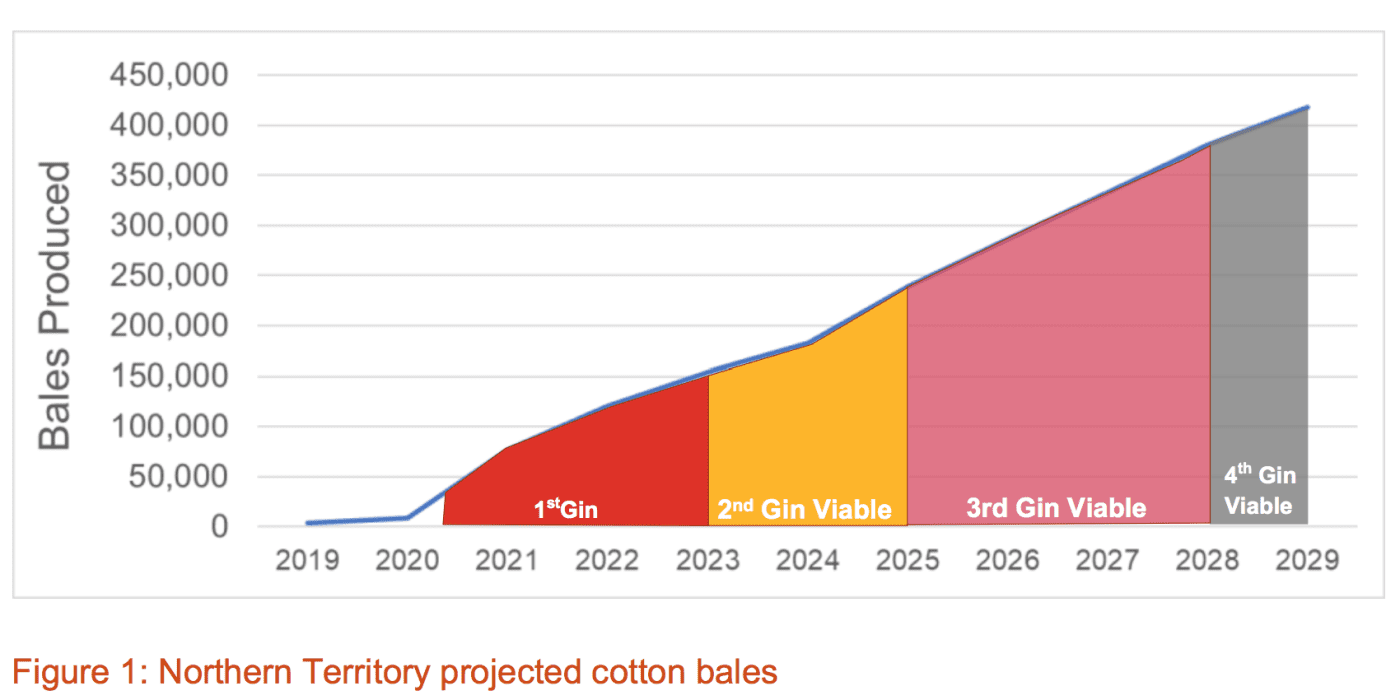
MOVES to rapidly expand the northern cotton industry – and with it a locally-produced supply of cotton seed for cattle – are gaining momentum in the lead up to this weekend’s Northern Territory Government elections.
Commercial cotton crops have been successfully trialled in several regions of northern Australia in the past three years, from the Ord River to Tipperary Station and the Douglas Daly, and new production areas are opening as more land is allocated for high value agricultural developments in regions such as Larrimah.
Most of the new cotton fields have been developed to grow rainfed, dryland crops at the tail end of the wet season.
Cotton was previously trialled unsuccessfully in the Ord River in the 1970s and 80s but new crops are benefitting from advances in crop production techniques, and genetic technologies including insect-resistant, more humidity tolerant and water efficient varieties.
There are now strong pushes to build cotton gins in the north to further drive the industry’s growth, which would in turn provide the benefit of a home-grown supply of cotton-seed to support northern cattle production.
In June a feasibility report prepared by Price Waterhouse Coopers and funded by the NT Farmers Association supported the viability of a northern cotton gin and recommended Katherine as the most likely ‘sweet spot’ for it to be located, due to its proximity to production areas and the major port of Darwin.
The concept has also received strong backing from the cattle sector, with the Northern Territory Cattlemen’s Association supporting the industry as a much-needed diversification measure for northern pastoral operations and for the production of local cotton seed.
It has also been backed politically in the approach to this weekend’s NT election.

Michael McCormack, Lia Finocchiaro and Tracey Hayes at the Berrimah export yards in Darwin last Thursday.
Speaking at the Berrimah Export Yards in Darwin late last week Country Liberal Party leader Lia Finocchiaro and new CLP candidate Tracey Hayes, a former Northern Territory Cattlemen’s Association CEO, pledged to fast track and facilitate investment in a cotton gin in the Katherine region if the CLP wins Government.
“We know that dryland cotton has an enormous opportunity to be an important industry for the territory, both as cotton as a product but also because of the fact that the by-product can be used as all-important cattle feed, making it a very efficient crop because of the multiple uses it has,” Ms Finocchiaro said.
“And with the new technology around cotton, we know it’s 40 percent more drought resistant and less water intensive, which means it’s a responsible crop to grow here in the Northern Territory.”
Further west a proposal to build a cotton gin at Kununurra is also gaining momentum, with the Western Australian Government, announcing in July a $100,000 grant to explore the feasibility of a developing a grower owned co-operative to process cotton in the East Kimberley.
Livestock feed significant flow on effect
In the NT, the PWC report said the production of cotton seed would be a significant flow on effect from ginning in the region.
“Cotton seed is rich in protein and fibre and provides ‘a complete meal’ for cattle and other grazing herd, particularly during drought periods when fodder and other grain becomes scarce,” the report said.
“Being able to locally source cotton seed meal would promote the intensification of the Northern Territory beef and grazing industry which has been lacking protein sources.”
The report estimated the cost of building a gin in Katherine will be in the vicinity of $28 million.
The PWC Business Plan suggested this would be funded through the NT Farmers applying for a $10 million from the NT Government’s $89m regional and industrial development “Local Jobs Fund”; with a further $10m to be matched with private sector funding from a cotton processor as well as equity investments by local, interstate and international grower-investors, and growers to finance the remaining amount.
Tipperary Station, owned by Allan Myers QC and family, has led the way with the largest individual plantings of commercial cotton crops in the NT in the past two years, as shown in this NTFA video produced in June:
Manager David Connolly said the creation of a local cotton gin would solve “a massive problem” for cattle feed in the north.
“For me, growing cotton here has always been two-fold,” he said.
“The lint can go and make socks and jocks, the cottonseed can go and feed cattle.”
After growing its first significant crop in 2019, Tipperary’s second crop was harvested in late June/early July.
The 300 hectare crop comprised 100ha grown on Tipperary’s licensed irrigation area, which is also used to grow fodder each year, and 200ha of rainfed broadacre cotton.
The station is relying on backloads to transport all of its recently harvest crop thousands of kilometres south to a gin for processing.
#TipperaryCotton Getting ready to send the big white diesal destroyer south again with my man Bosto at the helm. @bouta_nt @AdamCoffeyNT @cottonfarmgirl @SimonCotter62 @stationmum101 @troysetter pic.twitter.com/vLV7xsDGDW
— 🇦🇺 David Connolly (@sokitomi) August 14, 2020
Mr Connolly said a lot was learned from the first crop and it is expected that when the second crop is processed it will show a higher yield.
After two years of growing cotton on Tipperary he said he is very confident cotton will be a commercially viable crop for the north.
The NT Government estimates that about 800 hectares of cotton was grown in the NT in the Katherine and Top End regions in 2019 and 2020, 80 percent of which was rain-fed. The developing industy is also being supported by cotton trials at the Katherine Research Station.
Tipperary alone produced more than 1500 bales this year, and has plans to expand in coming years. The station recently had an application for a non-pastoral use permit to expand its broadacre cropping area to 14,000 hectares approved.
Opinion varies on how much cotton would be needed to viably support a cotton gin.
Some estimates suggest that with different configurations a gin could operate with as little as 20,000 bales.
The PWC report nominated a figure of around 50,000 bales.
The report said that in 2019 about 4500 bales of cotton were harvested by five growers across the Northern Territory and Kimberley regions.
On the back those successful trials it suggested at least 10 new local and interstate growers and international investors entered the industry for the 2020 season, predicting a total harvest of about 8180 bales this year.
With the confidence that investors would receive from confirmation of new gin infrastructure in the region, production would explode beyond 2024 to a potential 434,000 bales in the NT and 230,000 in the Ord Valley, the report suggested.
“I think across the Northern Territory and Western Australia you’re going to find there will be enough cotton to support a gin and then in the future, if the crop takes off and people continue to see a future, you might see a couple of cotton gins up here,” Mr Connolly said.

Source: NTFA Business Case for the Construction of a Cotton Gin in the Northern Territory, PWC
Mr Connolly said that production would expand both from new industry entrants and from existing producers expanding current production areas
“Farmers are going to plant larger areas because they’re finding they’re getting better at it,” he said.
“Cotton is an exciting crop, if you plant cotton it will grow, and then if you have some skills in the area it will grow better, and then the more that you upskill, the more you will produce – its production is based on your skillful inputs.”
He said pest pressure had been minimal in the first two years of growing the crop in the NT.
Humidity was a bigger issue but the industry was developing techniques and looking to varieties developed for tropical areas to mitigate its effect on the plant.
He said it was pleasing to see Government support to develop an industry that he said “can have untold good for the north”.
“The other thing to be said is that a cotton crop these days is not the cotton crop of 20-25 years ago.
“This is a highly water efficient, highly effective minimum input crop that is suited to growing under this higher rainfall we have.”
Mr Connolly said the owners of Tipperary Group of Stations were dedicated to developing industries that would take the NT forward and, amid all of the talk about developing the north, were investing in actual development.
Grain Central: Get our free daily cropping news straight to your inbox – Click here

HAVE YOUR SAY